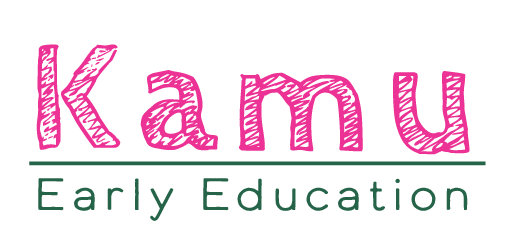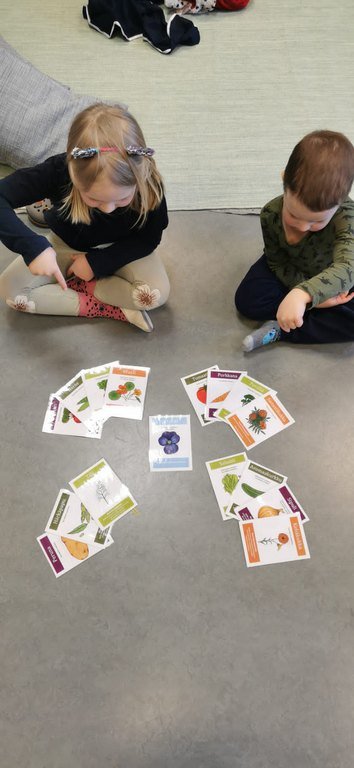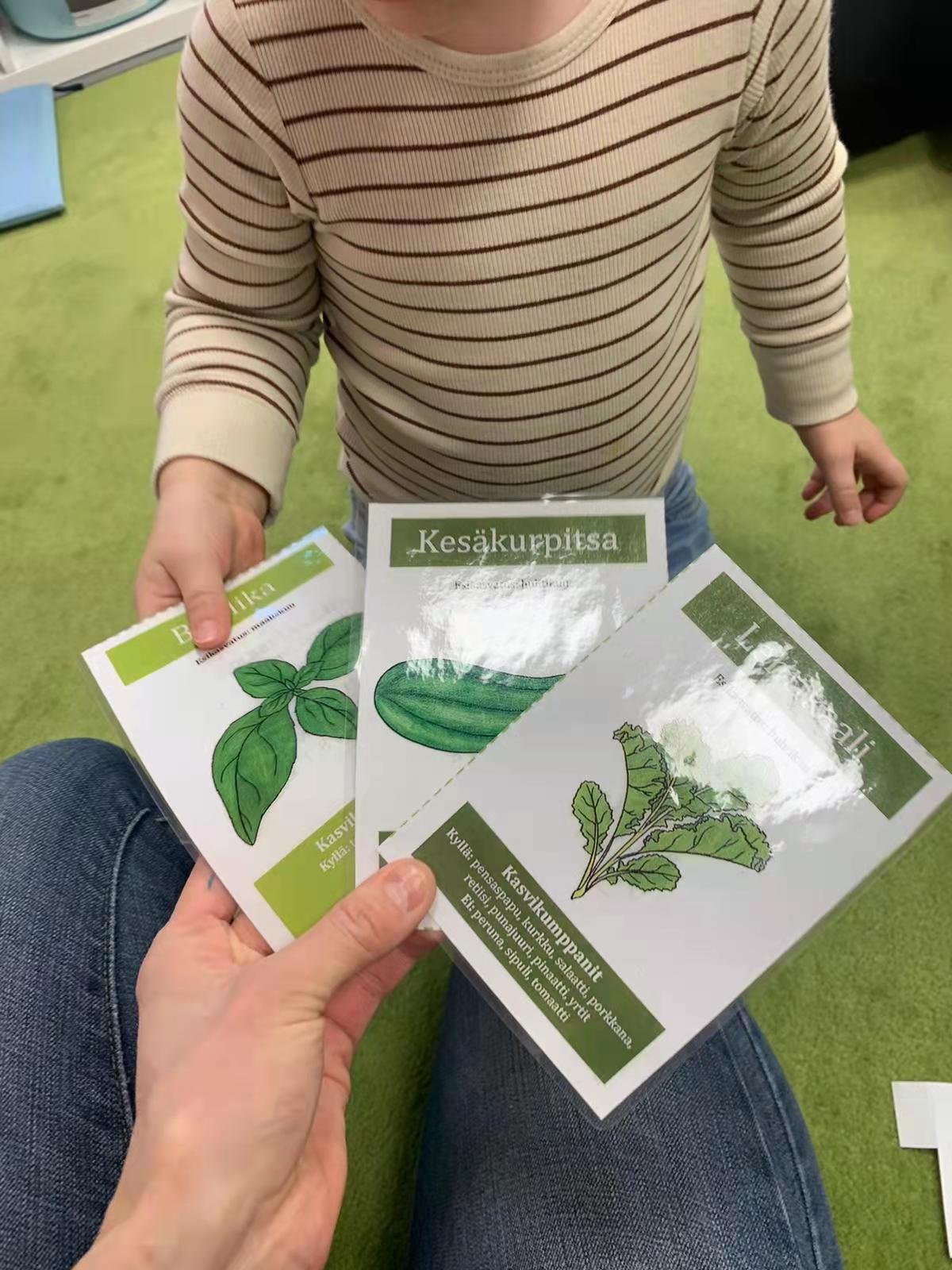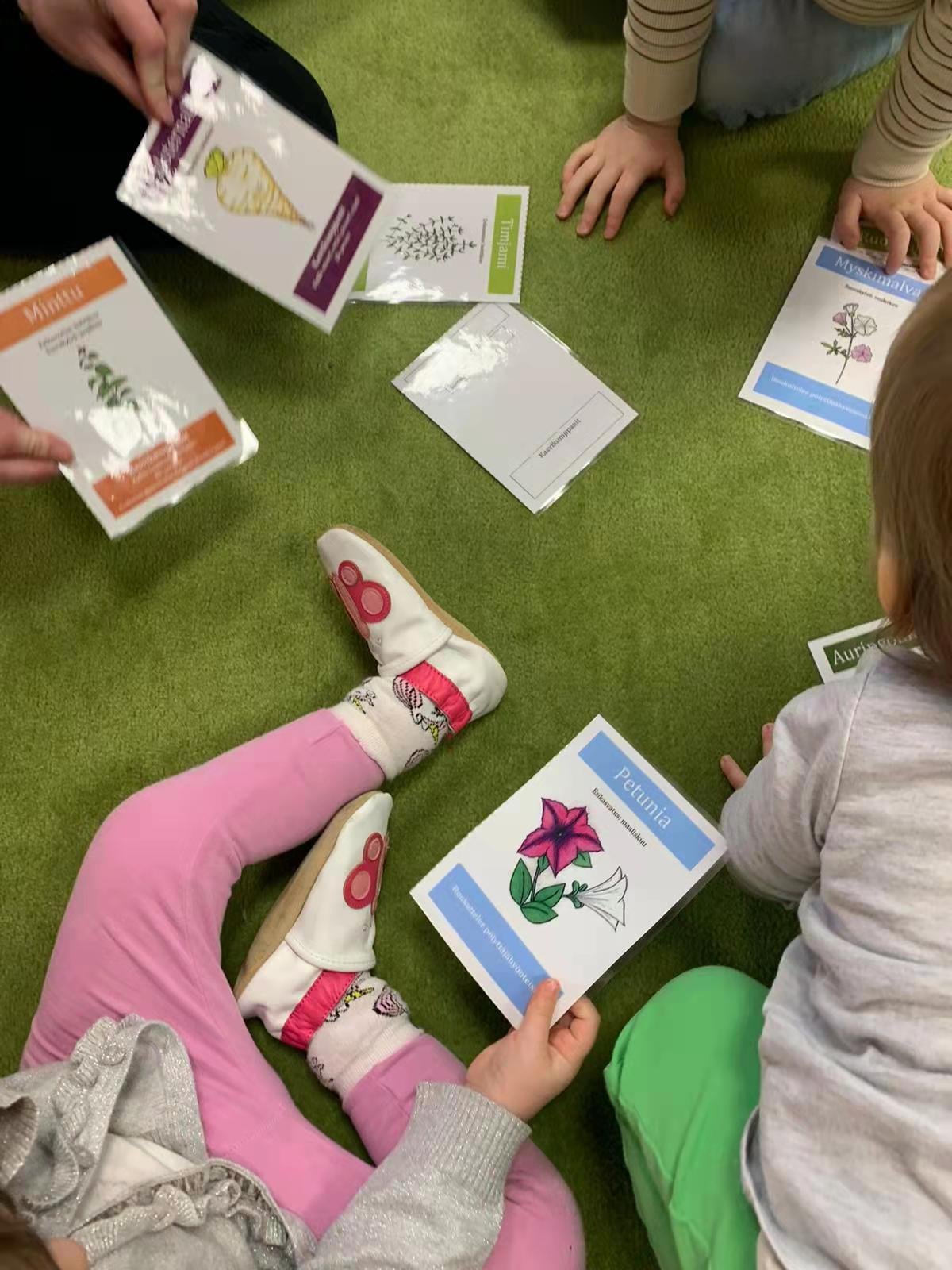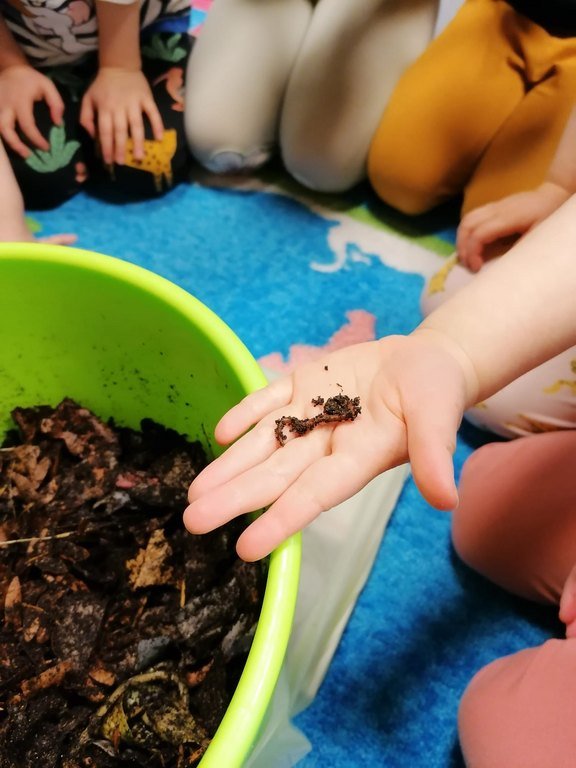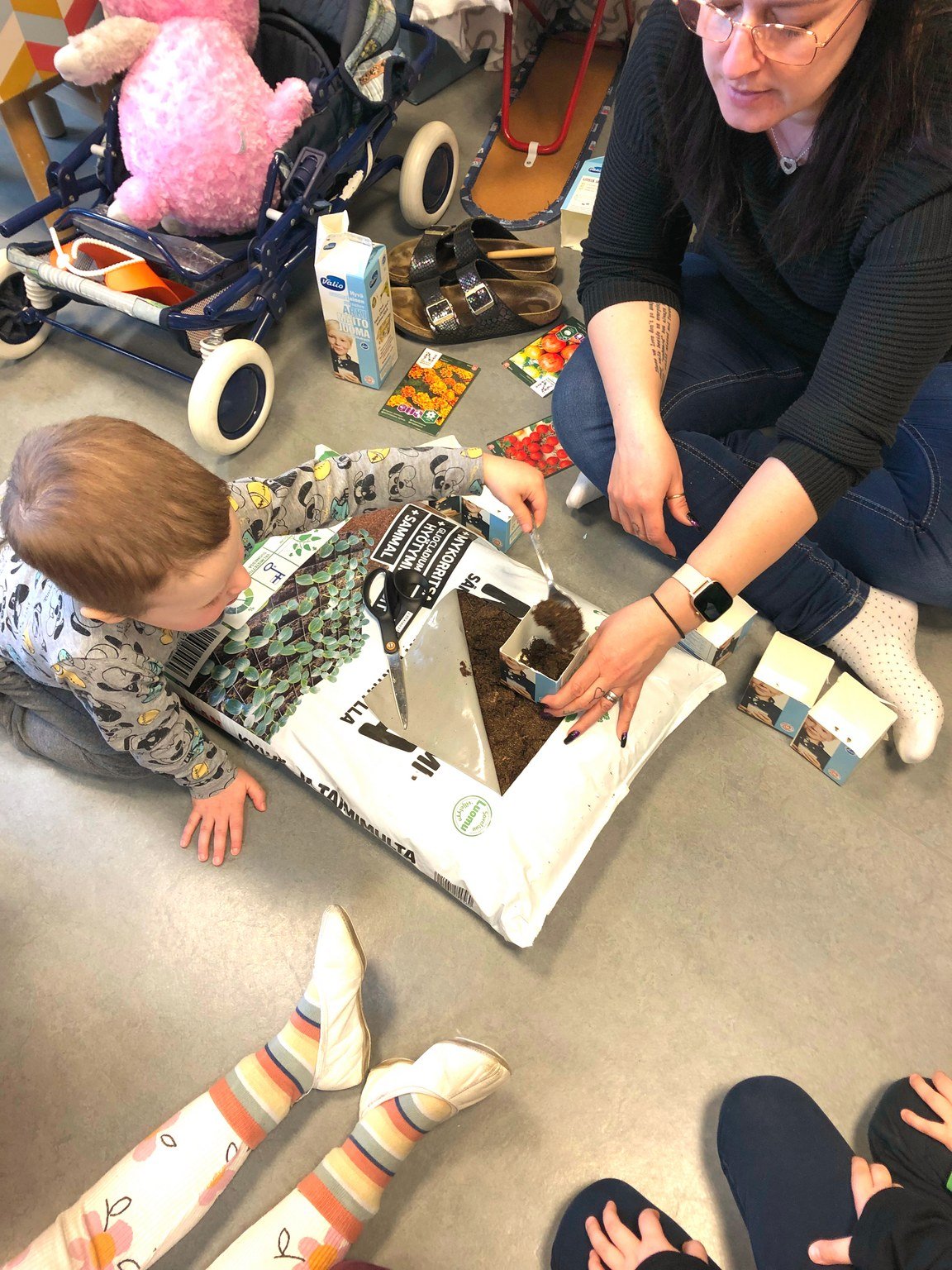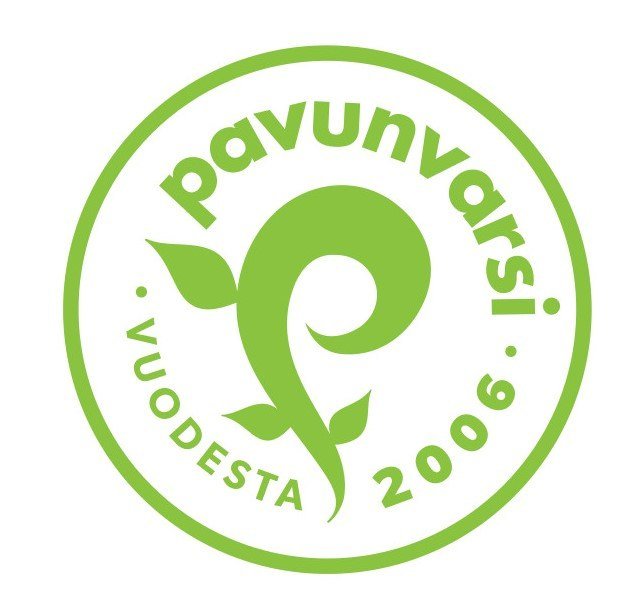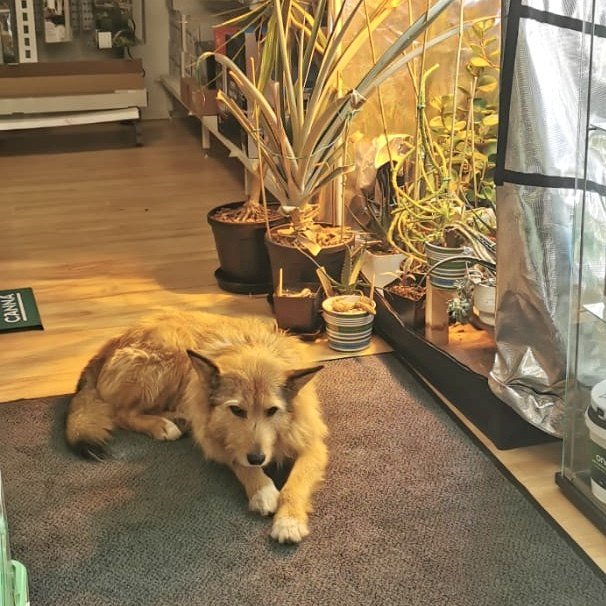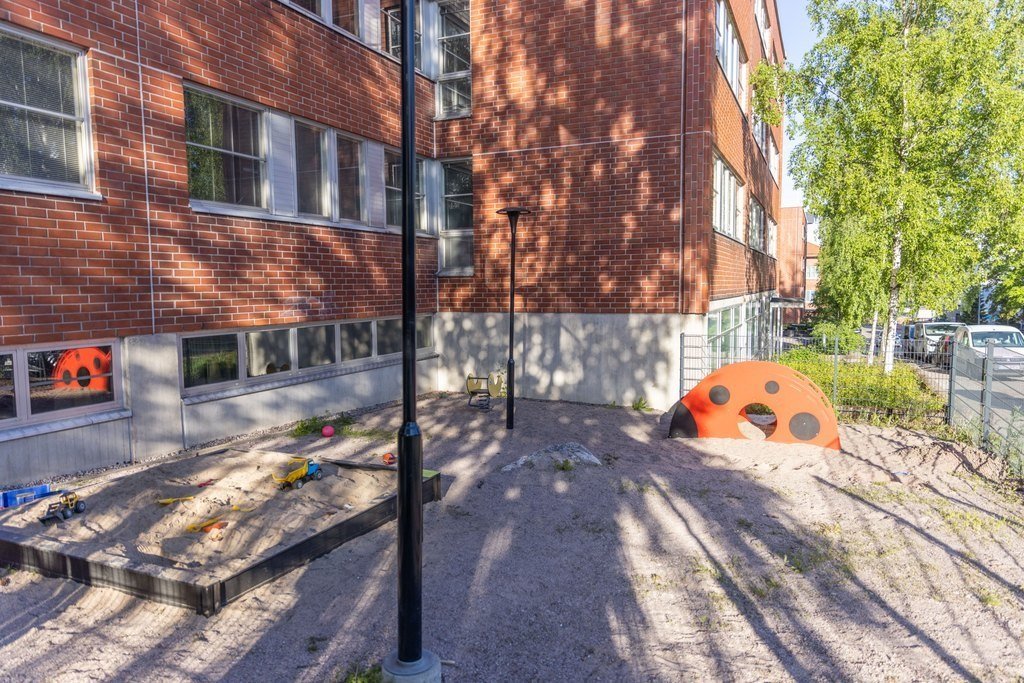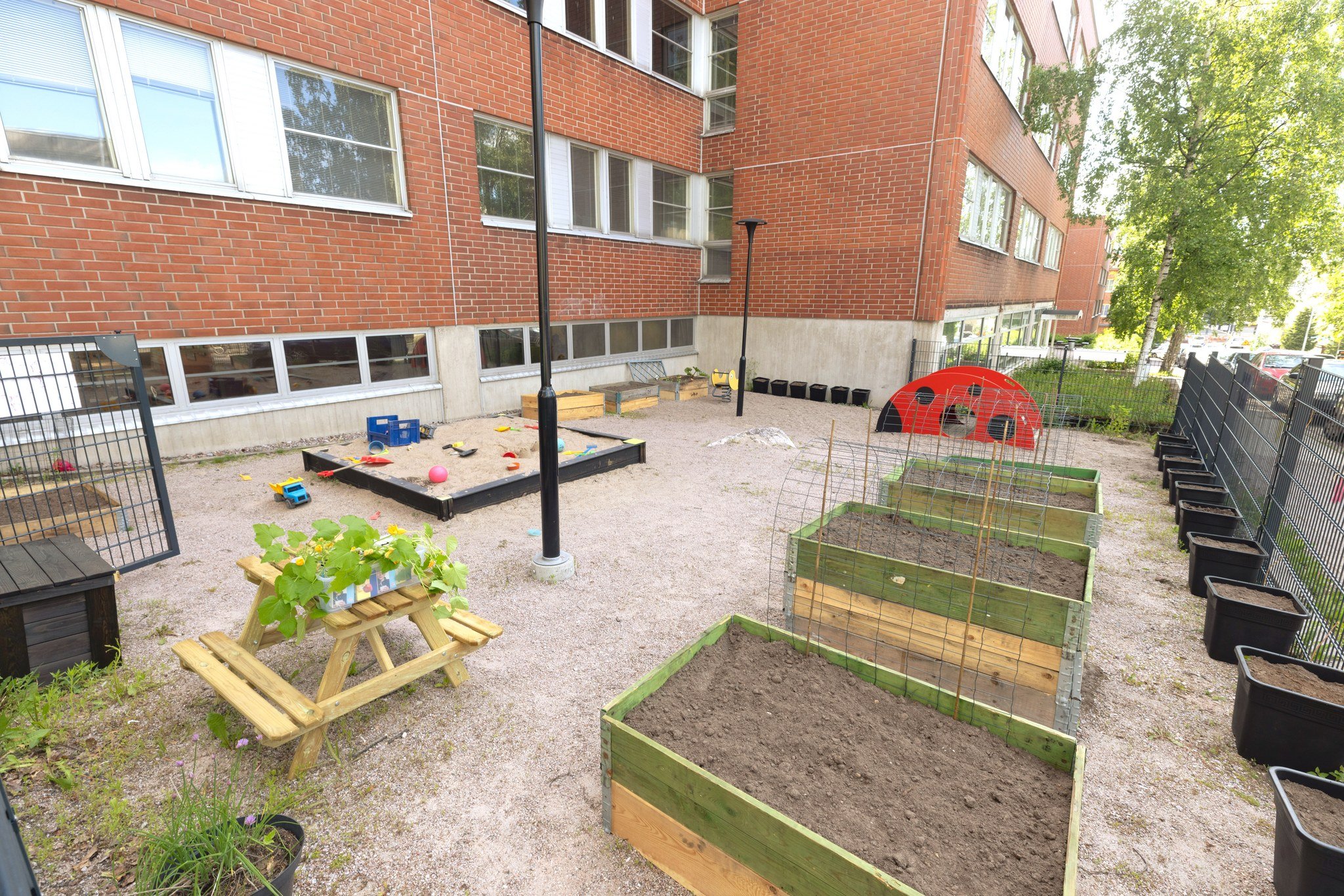Kamu’s garden has moved and been expanded!
Environmental education and emphasis on nature play an important role in Kamu’s actions. In children’s opinions, the best and most enjoyable method of environmental education is building your own garden.
We created a small container garden as early as in the summer of 2021
The garden was located near the yard behind the fence and everything seemed fine except that we didn’t count the damage that rabbits would cause. In gardening not everything went as planned, but every year we gained more knowledge and experience. Kids appeared to enjoy taking care of edible plants and especially eating them, so overall it was a success.
This year we decided to move the garden to its own designated area. Our small front yard was in little use before, so by moving the garden there we created a larger enjoyable area for the children to play in. And as an added bonus rabbits cannot reach there to eat our plants anymore.
Marianne Aalto, an experienced environment educator, has been helping Kamu with our new garden. Marianne herself is also a passionate gardener and has been helping in many projects, for example she was involved in the development of urban farming in kindergartens for the Capital Region Recycling Center.
Gardening work began in the early spring
It all began in the early spring. Adults as well as children planned the garden together. Oldest children got to choose which plants we would grow in the garden. Whilst making a plan we took every plant's need for space and companion plants into consideration. We didn’t want to settle only one species for each pot, so we let different plants grow amongst each other just like in nature.
When gardening plans were ready, each group pre-sprouted at least one type of plant for the future garden. The plants were taken care of with love. They were watered and manured with the kindergarten's own vermicompost fertilizers. We also discussed the nutrient cycle and the importance of it.
In the spring we introduced a theme of gardening day. Each group had their own gardening day, when it was their responsibility to water and manure the plants.
Creating the new garden
In April we ran out of time so we had to rush. We tried to scrape together material from tori.fi, shops and families. We aimed to use as much recycled material and used equipment as possible.
In early June we arranged a voluntary work week. During that week each group took turns pottering around the garden and helping as much as possible. Each group's parents were also invited and little by little the garden began to form.
During the first day of the week, the eldest children (Leppikset 3-5 yrs) got to help tidy up and move the old pallet collars to their right places. We also dug pits for two berry bushes.
On the second day, Kävyt (2-3 yrs) worked hard together with their parents and moved a massive pile of soil into the pallet collars and pots. In children’s opinions, it was really fun. Who wouldn’t like to play with soil!
On the third day, the youngest Toukat (1-2 yrs) planted the kale that they had grown. They also watered and planted a variety of different plants for example potatoes, peas and different flowers. Some were so keen gardeners that they wouldn't stop watering. Seems like we have some good gardeners on the way!
On the last day of the voluntary week Leppikset had the last chance to garden. So we got to work and planted the pre-sprouted plants and sowed as many seeds as possible. Everybody participated with enthusiasm.
Gardening in kindergarten’s daily life
In summer groups will visit the garden at least once a week during their own garden day. They water and manure the soil and uproot any unwanted plants. At the same time we try to discuss the growth of the plants, examine bugs, enjoy the harvest of our gardening and of course play in the garden. During the summer break in July families take turns to maintain the garden. In August we will continue each group’s gardening days which will go on all the way to September-October’s harvest party.
Gardening has numerous benefits. One of the most noticeable benefits proven by lots of research is that by adding the touch of nature to their daily life, children can strengthen their immunity, reduce chances of allergies and improve their skin condition. By growing and taking care of plants children will learn very fundamental information about nature, such as how plants grow from seeds, what they require for growth. Gardening also teaches both children and adults orderliness and perseverance. You can never learn too much of these qualities.
Local garden shop supporting our activities
A local garden shop called Pavunvarsi hopped on our project and kindly donated big pots, fertilizers, tools and support sticks. We appreciate the support of Pavunvarsi very much! The store is located just a few blocks away from the kindergarten. In addition to kind service and a good selection of gardening equipment, you also get to see the cute and friendly store pet Edu Koiranen.
Sustainable development in the garden
One of our goals is that the garden would abide by the standards of sustainable development. For this exact reason, most of our equipment are of second-hand. This supports not only ecological but also financial sustainability. We also take care that the harvest will go to our own use instead of wasting it in the compost box (even though the compost worms would like that very much).
We supported social sustainability by calling each group’s parents to arrange the garden with us. We built the garden together and we hope that everybody will take care of it, as if it was their own. Families have made reservations for July when they will water, harvest and take care of the garden in roll. Not many families have good gardening possibilities in urban areas so we want to support parents’ gardening interests too. We aim to involve more stakeholders in our community by searching more stores and encouraging them to support our activities. Our dream is to develop various methods to engage them during this process. In addition, we will gradually introduce cultural sustainability by arranging different themes and campaigns.
Before it was small, the front yard seemed a bit gloomy but the pallet collars and plants have brought brightness to the yard. During summer a tasty green oasis will be rising in the front yard.
